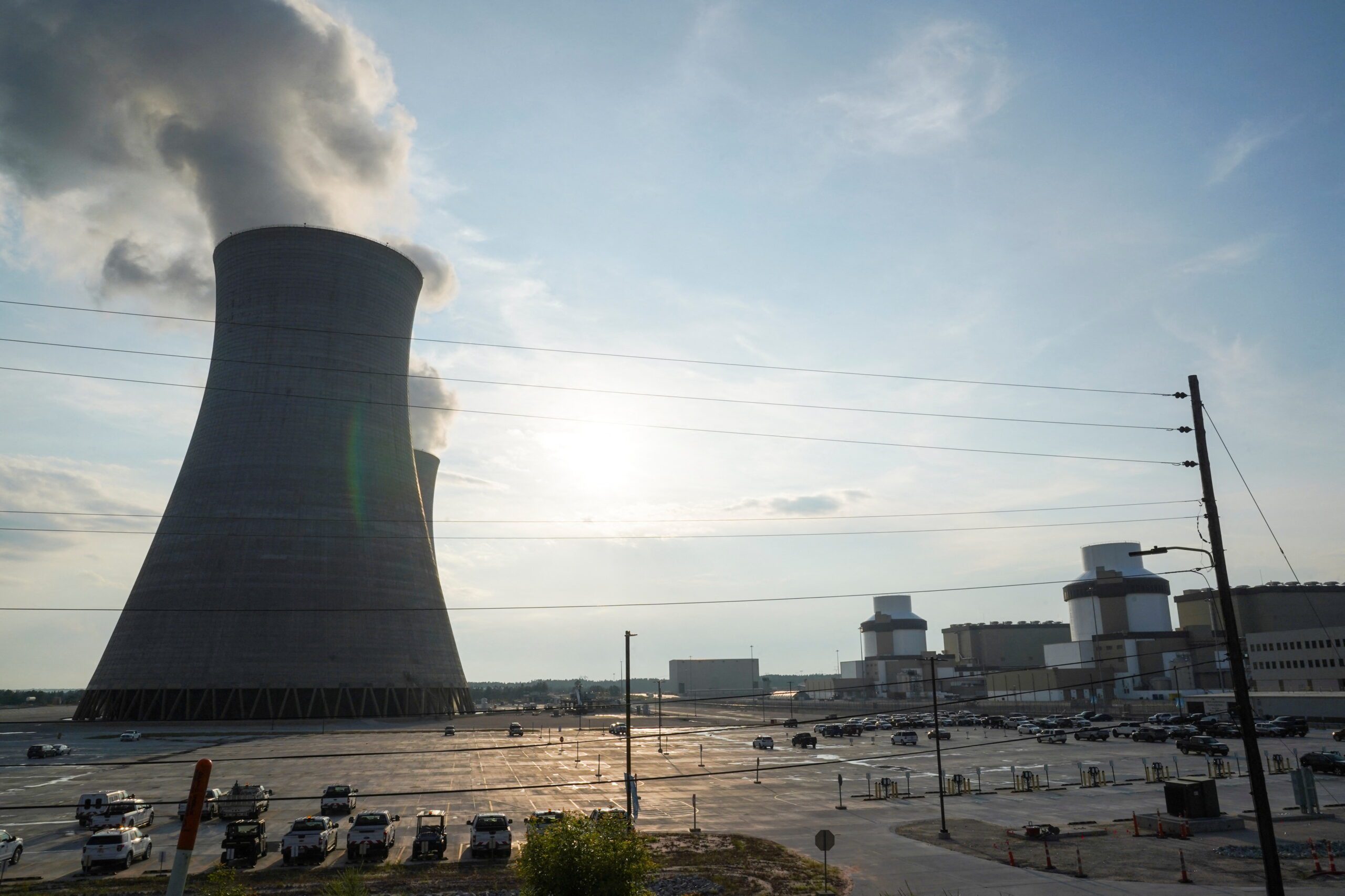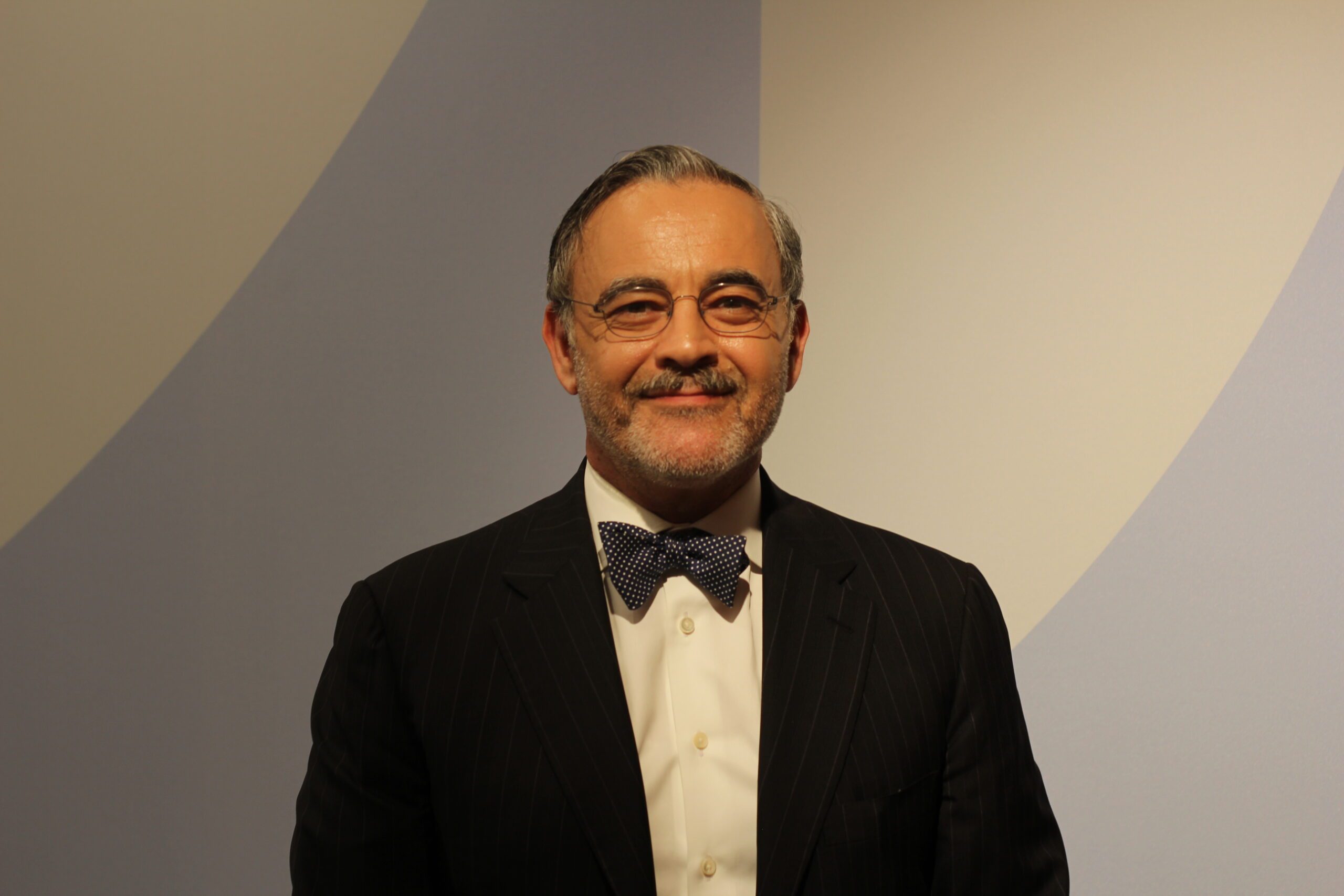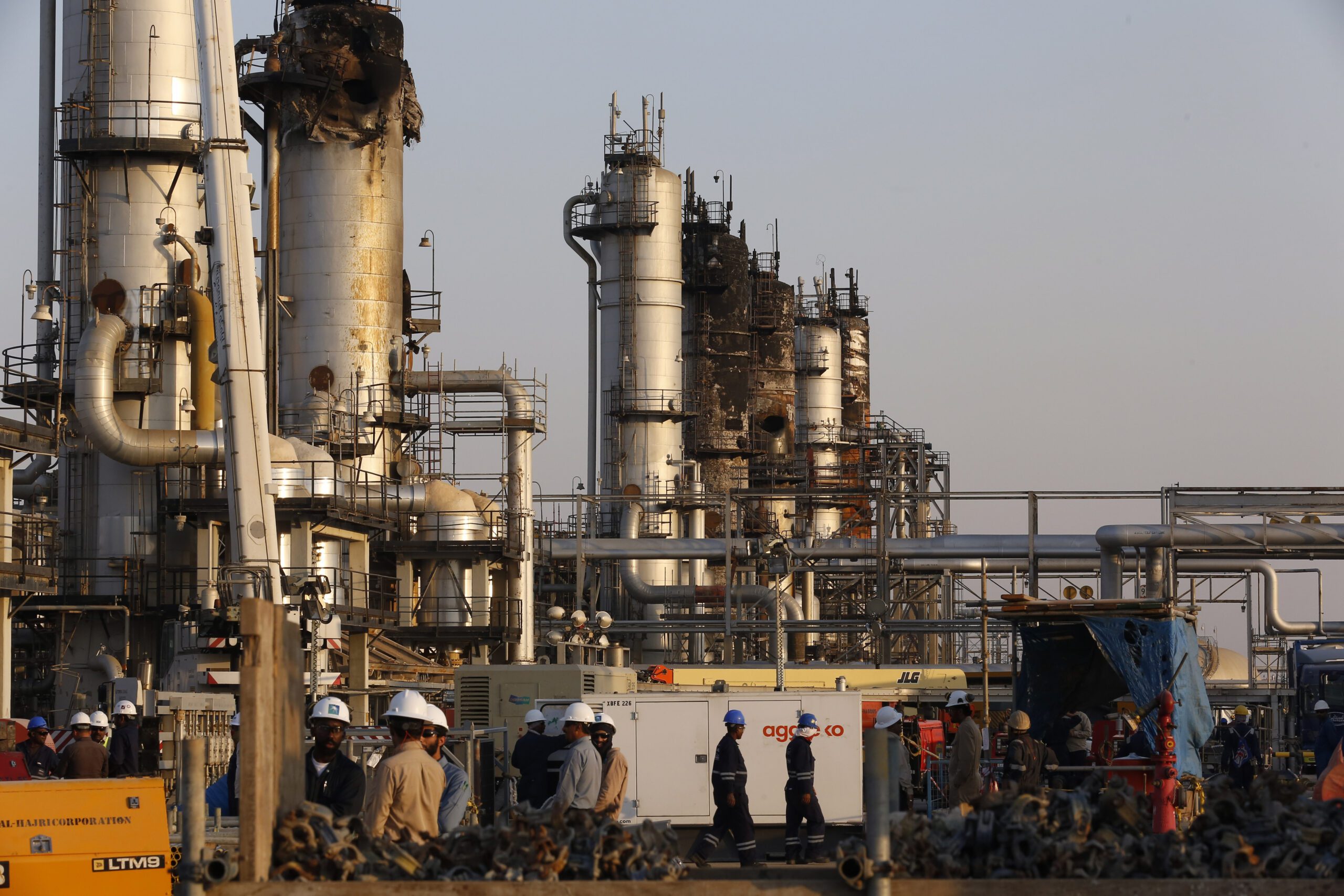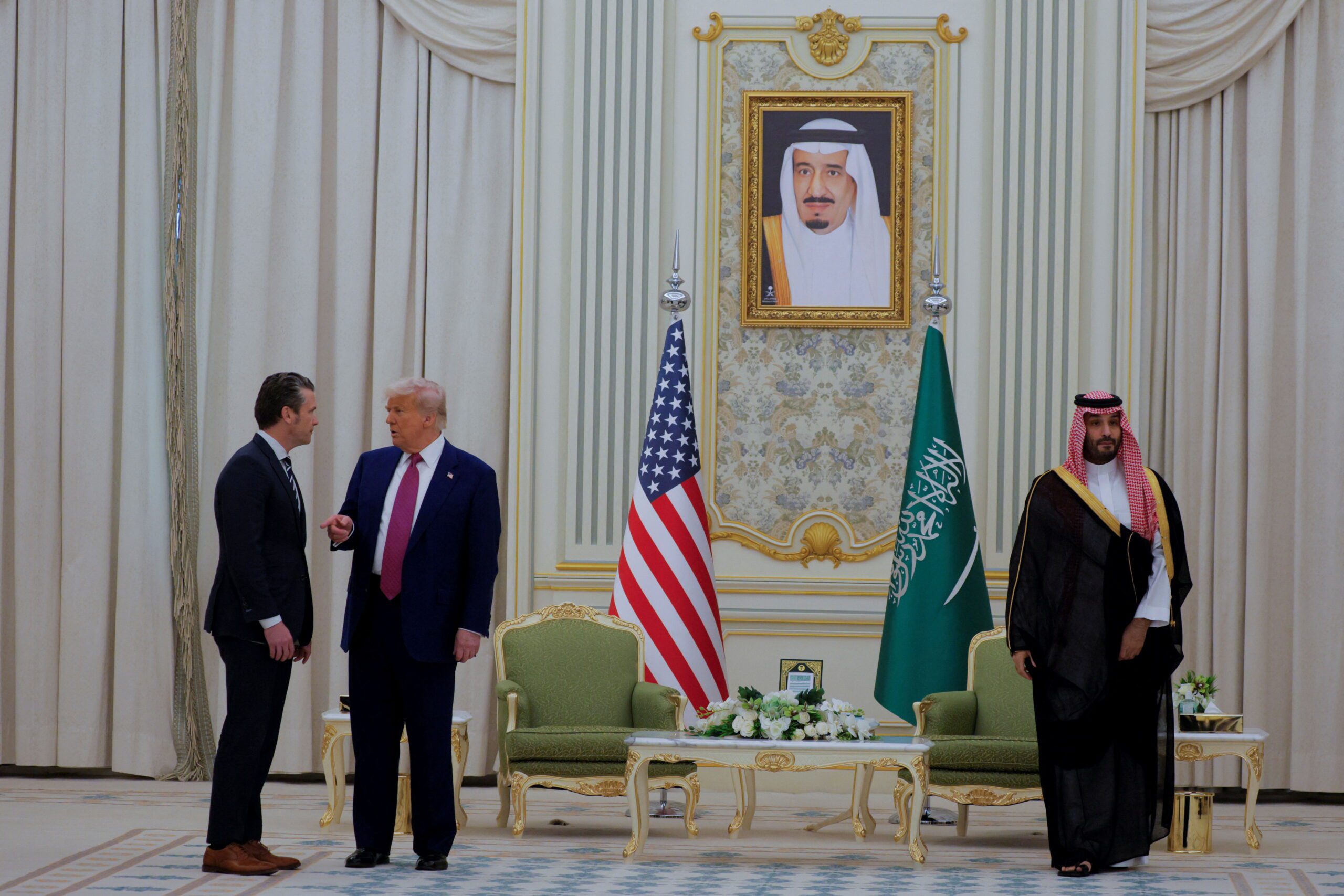As the Spotlight Fades: Where Is U.S.-Saudi Nuclear Cooperation Headed?
The United States and Saudi Arabia signed a joint declaration cementing U.S. interest in nuclear cooperation, but they have yet to settle the more divisive issues, mainly domestic enrichment.

Saudi Crown Prince Mohammed bin Salman left Washington November 20 with almost every promise he had hoped for from President Donald J. Trump. The U.S. administration showcased an unprecedented readiness to accommodate Riyadh’s long-standing demands, projecting unity and strategic alignment between the two countries. While many promises were made, one sensitive file remains pending: the U.S.-Saudi nuclear energy agreement.
While both parties signed a Joint Declaration on the Completion of Negotiations on Civil Nuclear Energy Cooperation, this document further underscores what has yet to be agreed upon: the issue of domestic enrichment and the transfer of sensitive technology and know-how. After years of negotiations, it had looked like Mohammed bin Salman’s visit might have culminated in a 123 agreement, the legally required framework under the United States’ 1954 Atomic Energy Act for the transfer of nuclear materials, technology, and knowledge.
In an interview, U.S. Energy Secretary Chris Wright indicated that the cooperation being discussed is “not about enrichment. It’s not about anything related to weapons.” However, importantly, uranium enrichment does not equate to nuclear proliferation: While nuclear enrichment and reprocessing are the two pathways for acquiring the bomb, all parties to the Nuclear Nonproliferation Treaty, including Saudi Arabia, have the right to pursue such capabilities for civilian purposes under International Atomic Energy Agency safeguards. Second, Wright’s statements indicate that the enrichment question for Saudi Arabia has yet to be settled. Therefore, while the joint declaration cements U.S. interest in nuclear cooperation with the Saudis, the road ahead remains long. For the time being, the joint declaration acts as a placeholder, leaving the door open for further negotiations, which could culminate in a 123 agreement that satisfies both parties.
Saudi Arabia’s Nuclear Reasoning
Under Vision 2030, the kingdom aims to diversify its energy mix, develop domestic industries, and reduce its dependence on foreign expertise. Nuclear energy fits in that strategy, as it would free up more oil for exportation, helping to finance megaprojects in the country. At the same time, it would provide a stable, nonfossil fuel source to meet domestic electricity demands. Further, the skills acquired in the hydrocarbon sector, already mastered in the kingdom, could also be transferred to the nuclear industry in some respects. Therefore, provided that the Saudis find a supplier that would share sensitive technology and know-how, and allow them to enrich uranium domestically, Saudi Arabia could theoretically develop new types of services in the nuclear industry. The kingdom’s uranium ore reserves (an estimated 90,000 metric tons), while insufficient for exportation, would suffice for domestic use, ultimately enabling the Saudis to develop a fully indigenous and independent nuclear fuel cycle. Such autonomy could down the line enable Riyadh to hedge capabilities as part of an overall defense strategy.
Saudi Arabia is unlikely to let go of this capability for a variety of reasons revolving around pride, national interest, and sovereignty. Given its inherent right to enrich under the Nuclear Nonproliferation Treaty, and its substantial uranium deposits, Riyadh sees no reason to constrain itself by forgoing enrichment and signing a more restrictive, “gold standard” 123 agreement, like the one agreed to by the United Arab Emirates, especially when other U.S. partners, such as South Korea, were not required to do so. (Although South Korea notionally retained the right to domestic enrichment, with U.S. permission, the United States withheld consent for more than 20 years, only agreeing to it during Trump’s recent visit. While the U.S.-UAE 123 agreement is believed to be the “gold-standard” of nonproliferation, the kingdom seems to understand it as a voluntary exception that must not become the rule in the region. Already, Saudi Arabia, like Egypt, has suggested that Arab states have been subjected to double standards by the nonproliferation community, which relied on strategic ambiguity to tacitly allow for a nuclear Israel and permitted an Iranian enrichment program under the Joint Comprehensive Plan of Action nuclear deal. Meanwhile, Arab states have been expected to forgo enrichment and subject themselves to the IAEA Additional Protocol, a voluntary safeguard agreement that provides the agency with a broader array of access and information.
While the conclusion of the Comprehensive Safeguards Agreement (a mandatory safeguards agreement for all nonnuclear weapons states party to the Nuclear Nonproliferation Treaty) with the IAEA is required by the 123 agreement, there is no explicit mention of the Additional Protocol in the U.S. agreement. The UAE is the only state to have signed and ratified the Additional Protocol under its 123 agreement. Any 123 agreement must meet nine nonproliferation requirements, namely the need to “obtain approval before enriching or reprocessing transferred nuclear material.” Typically, once signed, the 123 agreement is submitted to Congress, which has 90 days to review it. To block such an agreement, a joint resolution of disapproval would have to be adopted with a “supermajority,” ensuring that the presidential veto doesn’t override it, which has been historically difficult to achieve.
Finally, even though no 123 agreement came out of Mohammed bin Salman’s trip, Saudi leaders understand that if they want nuclear cooperation with Washington, their best option is to secure it while Trump is in power, given the intricate ties between the Saudi royal family and the president’s circle. Trump has also made it a priority since the beginning of his second term to revitalize the U.S. nuclear industry, as Russia and China account for the majority of planned nuclear reactors internationally. A multibillion-dollar nuclear partnership with Saudi Arabia could revitalize companies such as Westinghouse and Bechtel while avoiding Chinese involvement in the Saudi nuclear program. Removing the question of Saudi Arabia normalizing ties with Israel from the nuclear equation, and avoiding restrictive language that could alienate Riyadh, like “gold standard,” during Mohammed bin Salman’s trip underscores the U.S. administration’s interest in bringing an agreement to life.
Both sides have therefore incentives to keep the door open for negotiations, and many possibilities lie ahead, including:
- An iron-clad defense treaty and a gold standard compromise: Although Saudi Arabia has been elevated to the status of non-NATO ally, it is hard to imagine the kingdom under a U.S. nuclear umbrella. However, it seems to be the only case in which the kingdom might agree to forgo enrichment capabilities. Such a security agreement, ratified by Congress, would diminish the kingdom’s need to hedge through domestic enrichment. That said, Saudi Arabia’s trust in U.S. security guarantees remains tainted by Washington’s lack of response to the 2019 attacks on Saudi oil facilities in Abqaiq and Khurais. In addition, enrichment is not merely part of a hedging strategy; it symbolizes the kingdom’s sovereignty and self-sufficiency. Thus, even under such a treaty, Riyadh could still demand domestic enrichment rights.
- An ambiguous 123 agreement: Given the manner in which the joint declaration has been framed, the most plausible scenario would be one in which the 123 agreement signed would neither authorize nor explicitly ban Saudi enrichment. It would leave the door open for future negotiations while allowing both parties to move forward with the construction of nuclear power plants. That way, as trust incrementally builds, Saudi considerations could be framed under a review mechanism, establishing a temporary moratorium on enrichment that would be revisited every couple of years.
While the agreement would probably ban reprocessing and the storage of spent fuel, the Saudis would still gain significant technical experience and develop workforce capabilities. A parallel can be drawn with South Korea, which recently secured U.S. support to revisit its right to enrich and reprocess uranium under its 123 agreement.
However, if Saudi Arabia is provided with anything less than a “gold standard,” the UAE has the right to renegotiate the terms of its deal under the “most-favored nation” clause of the U.S.-UAE 123 agreement. Although it is unlikely for Abu Dhabi to demand equal enrichment rights because it has neither the ambition nor the capability to maintain a domestic nuclear fuel cycle, it could use it as leverage to try to push through its long-awaited F-35 purchase or in other negotiations with the United States.
This agreement would ensure Saudi Arabia does not develop a nuclear program with a more permissive supplier, such as China, and provide sufficient ambiguity to avoid having Iran use it as an argument during its future negotiations with the United States on its nuclear program.
- Saudi Arabia is granted its enrichment wish: The United States could end up authorizing the Saudis to enrich uranium to avoid Chinese-Saudi nuclear cooperation. Beijing is already collaborating with Riyadh on uranium extraction from seawater and a yellowcake extraction facility. With China’s help, Saudi Arabia is also believed to be building a ballistic missile facility. China, historically more flexible on the issue than the United States, could allow for enrichment and transfer of know-how, enabling a fully indigenous Saudi nuclear fuel cycle.
Granting Saudi Arabia its enrichment demand could present the opportunity to cap both Iran’s and Saudi Arabia’s enrichment levels at 3.67% (the level of enrichment previously granted to Iran under the JCPOA) and enforce the ratification of the Additional Protocol, allowing the IAEA deeper oversight of their respective activities. Iran has signaled its willingness to restart negotiations with the United States, and Saudi Arabia has long asked for equal capabilities as its neighbor. Despite turbulence in the region, the relationship between these historical rivals has remained stable since the China-brokered rapprochement in 2023. There could be a window to bridge the divide and push for a regional nuclear consortium.
- No Agreement: It is also plausible that the joint declaration was signed to save face and serves more as a diplomatic placeholder than a pathway toward deeper cooperation. After almost a decade of negotiations, perhaps both parties have come to the realization that their interests in the area do not align. This way, both sides walk away claiming partial success: The United States for maintaining nonproliferation principles and Saudi Arabia for refusing to submit itself to double standards.
While neither side has indicated a timeline for signing the 123 agreement, they both seem to have approached the issue with pragmatism through a joint declaration focusing on converging factors, including the transfer of technologies, rather than on divisive topics, namely enrichment.
The views represented herein are the author's or speaker's own and do not necessarily reflect the views of AGSI, its staff, or its board of directors.





